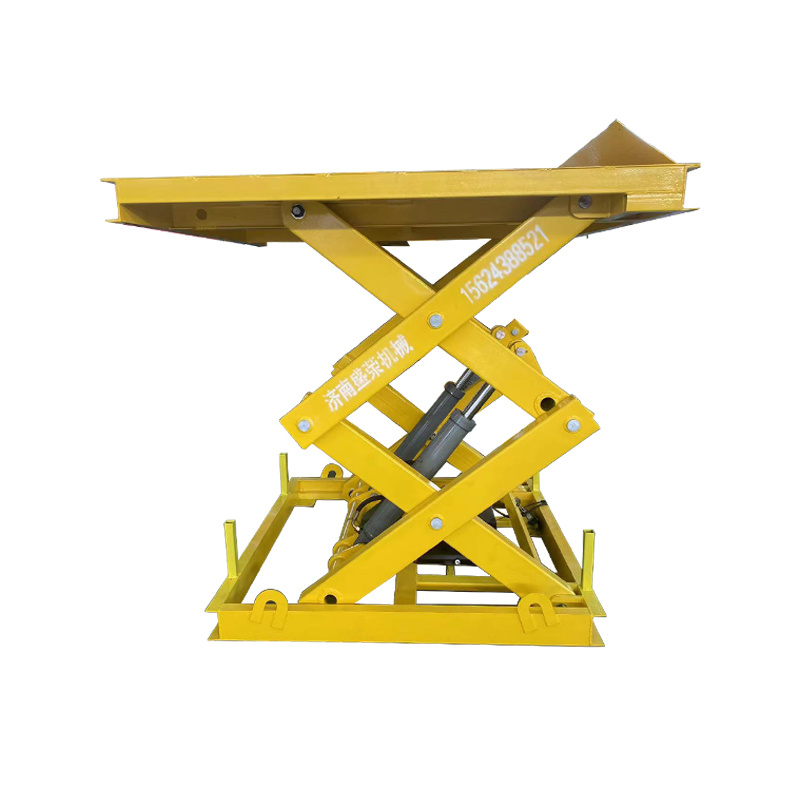Understanding Stationary Scissor Lifts: A Comprehensive Guide for Industrial Applications
Jul 05,2025

Stationary scissor lifts are an indispensable component in various industrial settings, particularly in the manufacturing and construction sectors. These platforms provide a safe and stable means to access elevated areas, making them ideal for tasks such as maintenance, assembly, and inspections. The design of stationary scissor lifts features a crisscrossing support mechanism, which allows the platform to rise vertically while maintaining stability.
One of the key advantages of stationary scissor lifts is their versatility. They can be used for a range of applications, from warehouse operations to construction sites. In manufacturing, these lifts facilitate the handling of materials at heights, enabling workers to perform tasks efficiently without the risks associated with ladders or scaffolding. The robust design of these lifts ensures that they can accommodate heavy loads, making them suitable for various tasks that require lifting significant weight.
Safety is a paramount consideration when operating any lifting equipment, and stationary scissor lifts are designed with multiple safety features. These include guardrails, emergency stop buttons, and overload sensors that prevent the platform from exceeding its weight capacity. Familiarizing operators with these safety features is crucial to prevent accidents and ensure a safe working environment.
Another aspect to consider is the maintenance of stationary scissor lifts. Regular maintenance checks are essential to ensure their longevity and consistent performance. This includes inspecting hydraulic systems, checking for wear and tear in mechanical components, and ensuring that safety features are functioning correctly. Proper maintenance not only extends the life of the lift but also enhances workplace safety.
In addition to safety and maintenance, it’s important to consider the operational aspects of stationary scissor lifts. Understanding how to operate these lifts properly, including knowing the maximum weight limits and the correct procedures for lowering and raising the platform, is essential for efficient utilization. Training operators on these aspects will significantly improve productivity and safety in the workplace.
Stationary scissor lifts are a vital investment for businesses involved in manufacturing and construction. Their ability to provide safe, efficient access to elevated work areas makes them a preferred choice for various industrial tasks. By understanding their features, operational guidelines, and maintenance requirements, businesses can maximize the benefits of these machines while ensuring a safe working environment for their employees. Whether you’re looking to improve efficiency in your operations or enhance safety protocols, integrating stationary scissor lifts into your workflow can be a game-changer.
One of the key advantages of stationary scissor lifts is their versatility. They can be used for a range of applications, from warehouse operations to construction sites. In manufacturing, these lifts facilitate the handling of materials at heights, enabling workers to perform tasks efficiently without the risks associated with ladders or scaffolding. The robust design of these lifts ensures that they can accommodate heavy loads, making them suitable for various tasks that require lifting significant weight.
Safety is a paramount consideration when operating any lifting equipment, and stationary scissor lifts are designed with multiple safety features. These include guardrails, emergency stop buttons, and overload sensors that prevent the platform from exceeding its weight capacity. Familiarizing operators with these safety features is crucial to prevent accidents and ensure a safe working environment.
Another aspect to consider is the maintenance of stationary scissor lifts. Regular maintenance checks are essential to ensure their longevity and consistent performance. This includes inspecting hydraulic systems, checking for wear and tear in mechanical components, and ensuring that safety features are functioning correctly. Proper maintenance not only extends the life of the lift but also enhances workplace safety.
In addition to safety and maintenance, it’s important to consider the operational aspects of stationary scissor lifts. Understanding how to operate these lifts properly, including knowing the maximum weight limits and the correct procedures for lowering and raising the platform, is essential for efficient utilization. Training operators on these aspects will significantly improve productivity and safety in the workplace.
Stationary scissor lifts are a vital investment for businesses involved in manufacturing and construction. Their ability to provide safe, efficient access to elevated work areas makes them a preferred choice for various industrial tasks. By understanding their features, operational guidelines, and maintenance requirements, businesses can maximize the benefits of these machines while ensuring a safe working environment for their employees. Whether you’re looking to improve efficiency in your operations or enhance safety protocols, integrating stationary scissor lifts into your workflow can be a game-changer.
PREVIOUS:







